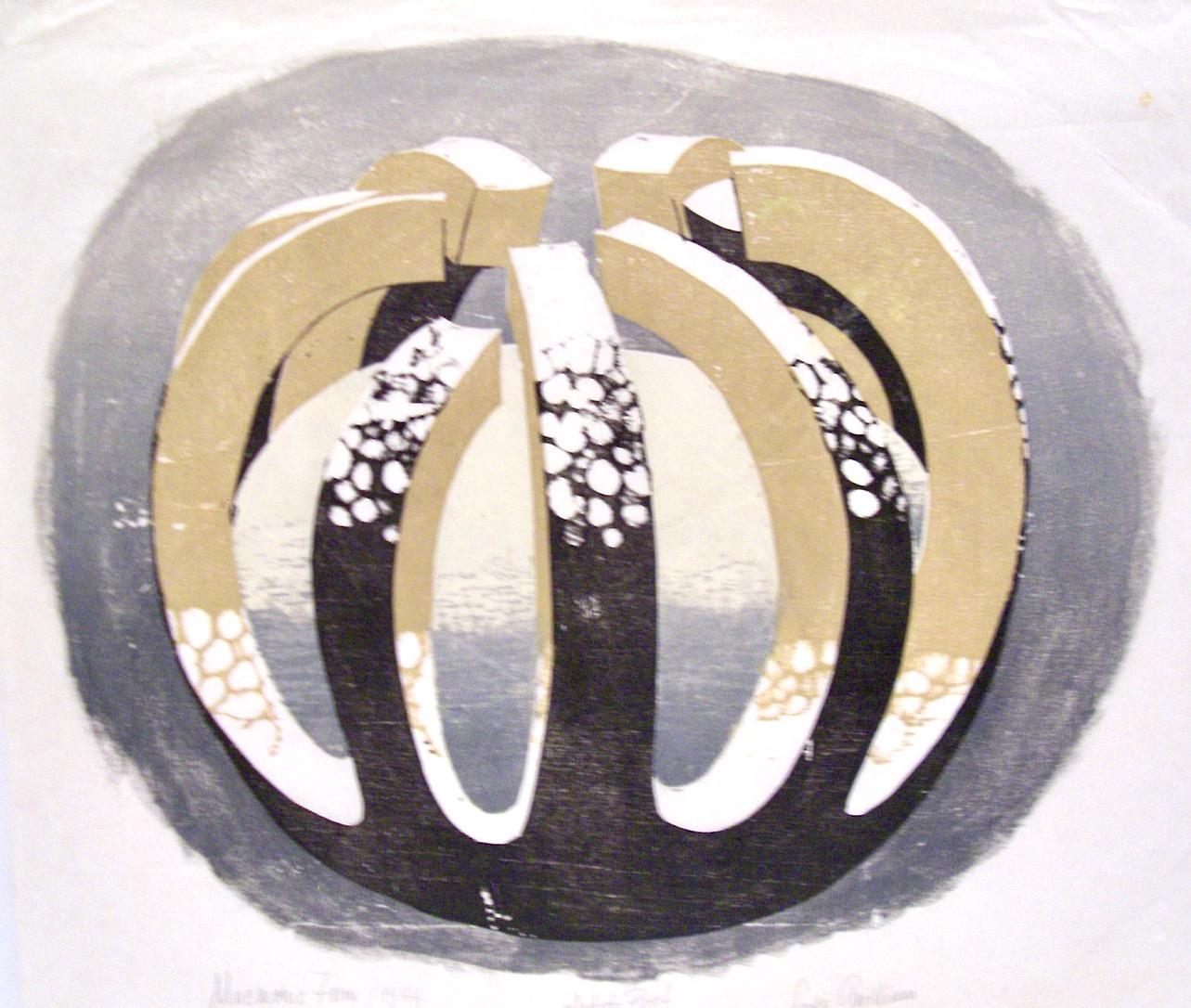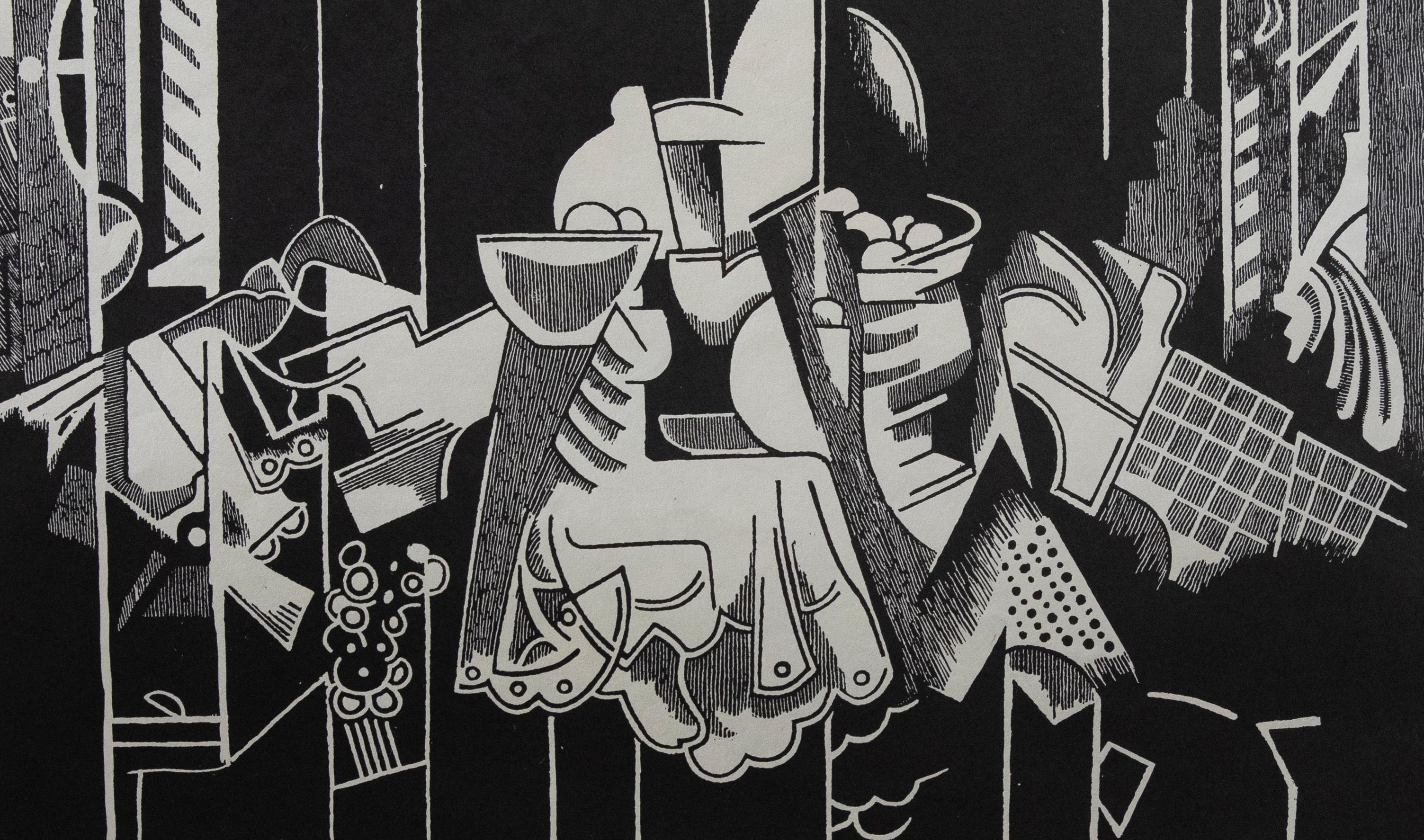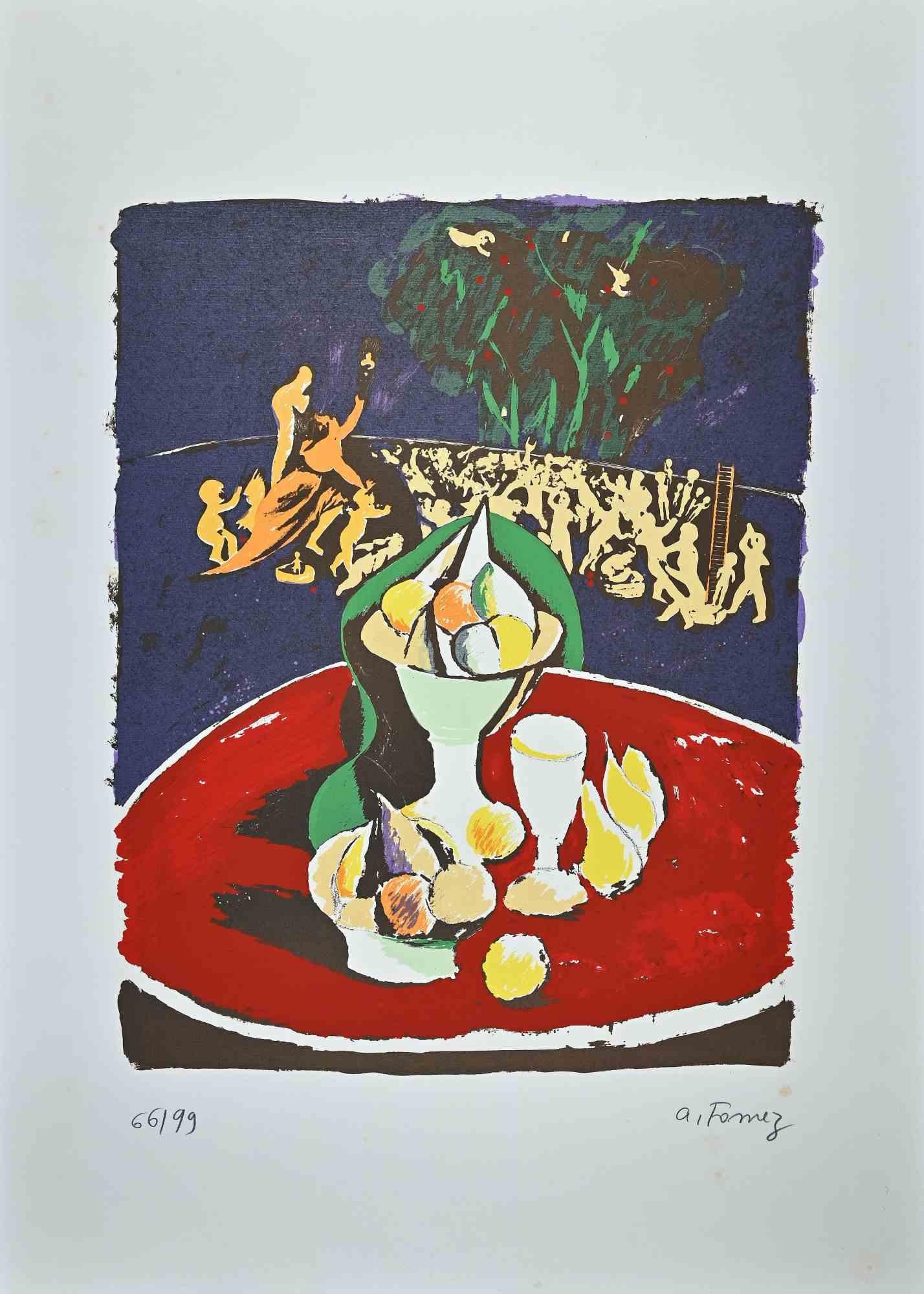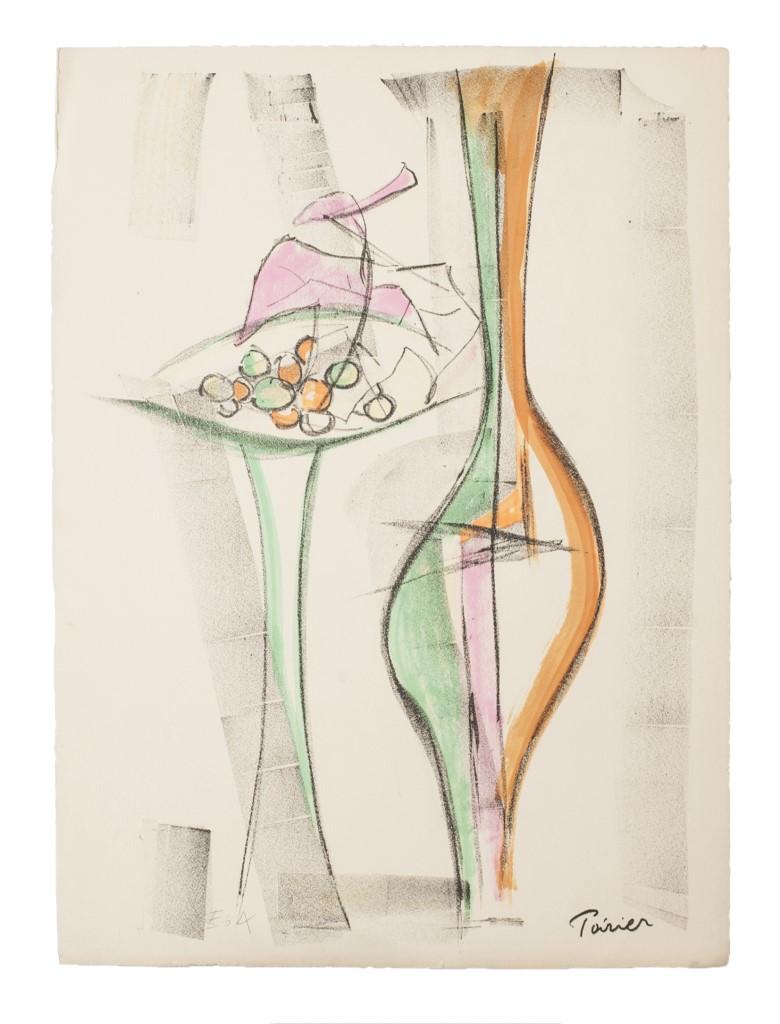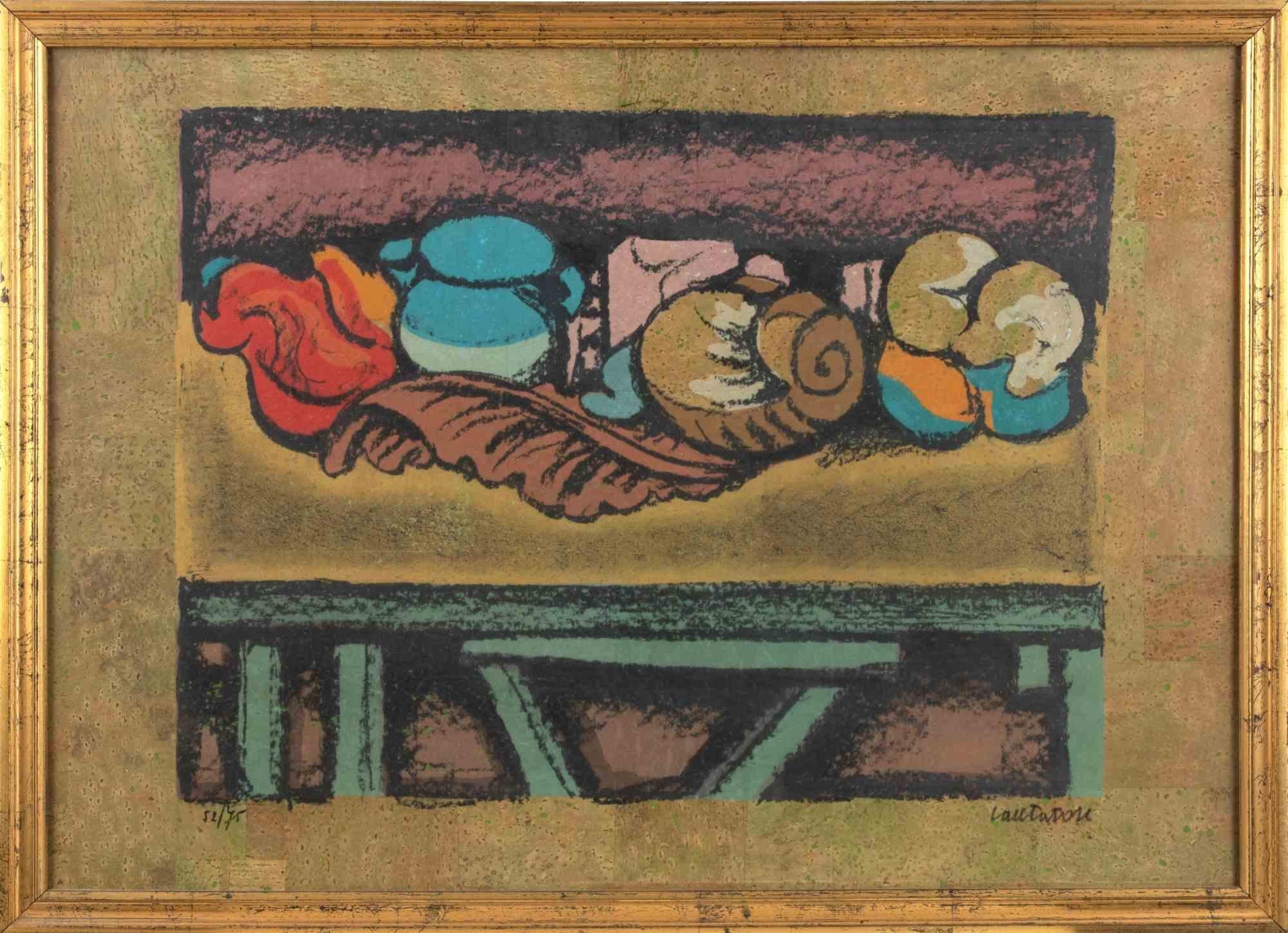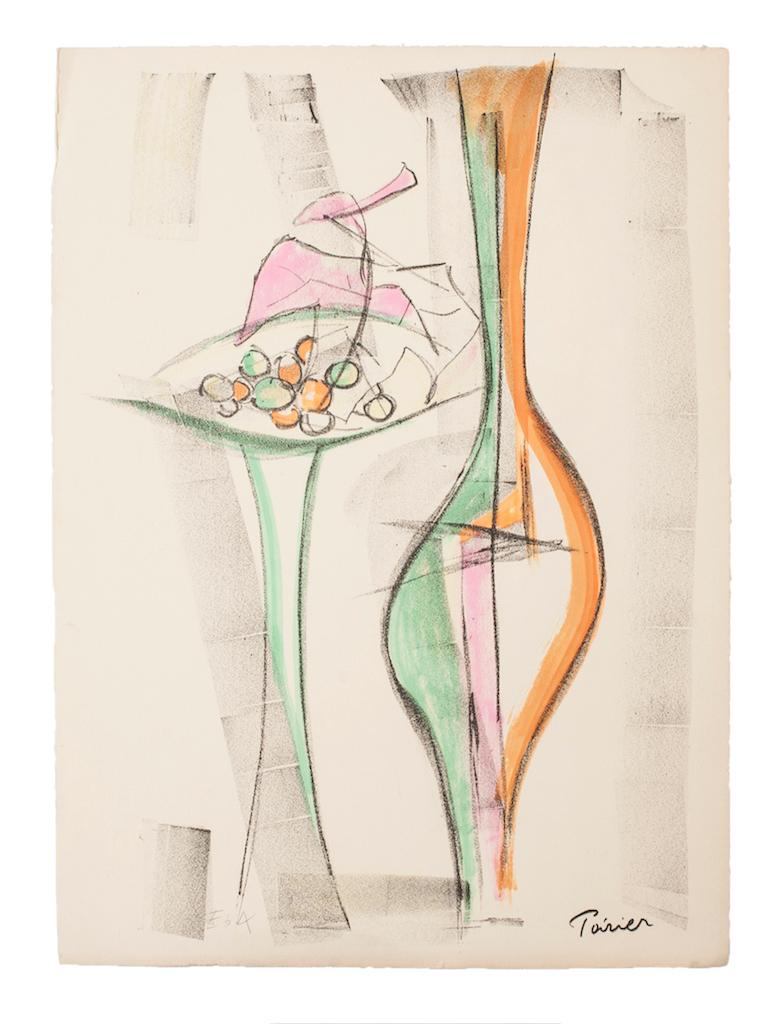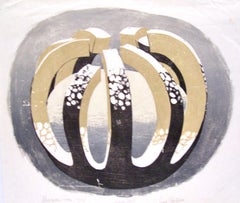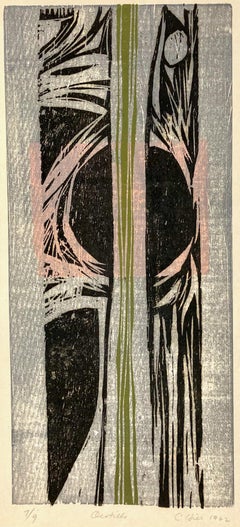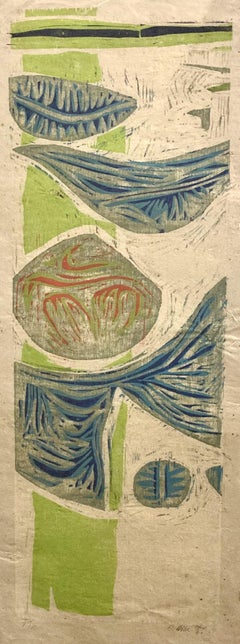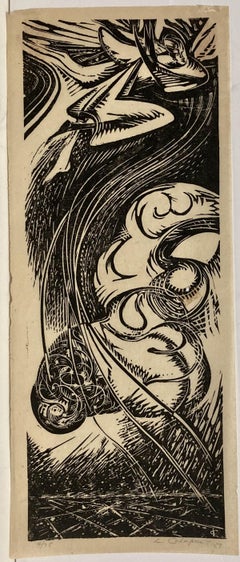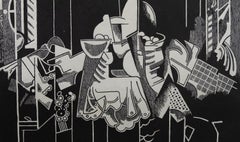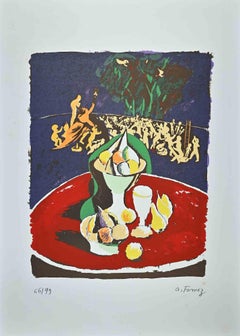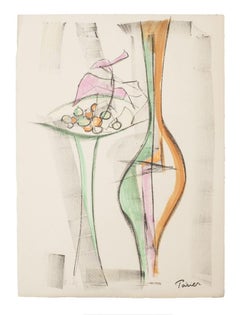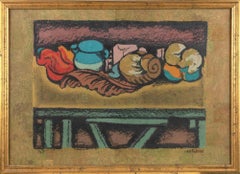Items Similar to Luke Gwilliam (1911-1989), Compote and Fruit, 1950, woodcut
Want more images or videos?
Request additional images or videos from the seller
1 of 9
Luke GwilliamLuke Gwilliam (1911-1989), Compote and Fruit, 1950, woodcut1950
1950
$1,500
£1,142.75
€1,304.15
CA$2,107.85
A$2,297.19
CHF 1,216.46
MX$27,591.68
NOK 15,400.67
SEK 14,159.40
DKK 9,740.55
About the Item
Luke Gilliam has a highly unusual woodcut technique. Here it is used to contain a fruit plate in an impressionistically-inspired environment made up of earth tones. It's a fascinating composition of the most basic of art subjects -- the still life!
The printing goes just to the edge of the sheet so the image size, 14 x 14 1/2 inches, is also the sheet size.
There are traces of foxing. Sometimes they are hard to see as they echo the colors of the inks, but there are close-ups -- especially to show the edges of the image.
It is signed, titled, and numbered,' in pencil. The edition indicated is 50. Perhaps that is a 'proposed' edition as I've never seen another impression of this subject. In all likelihood it is scarce as is most of his work.
- Creator:Luke Gwilliam (1911 - 1989, American)
- Creation Year:1950
- Dimensions:Height: 14 in (35.56 cm)Width: 14.5 in (36.83 cm)
- Medium:
- Movement & Style:
- Period:
- Condition:This print is in fair condition. There is foxing, most apparent at the lower third of the image. It is sometimes hard to see but it does exist. It's especially between the printing and the edge of the sheet, at the sides and bottom.
- Gallery Location:New York, NY
- Reference Number:1stDibs: LU1410214758322
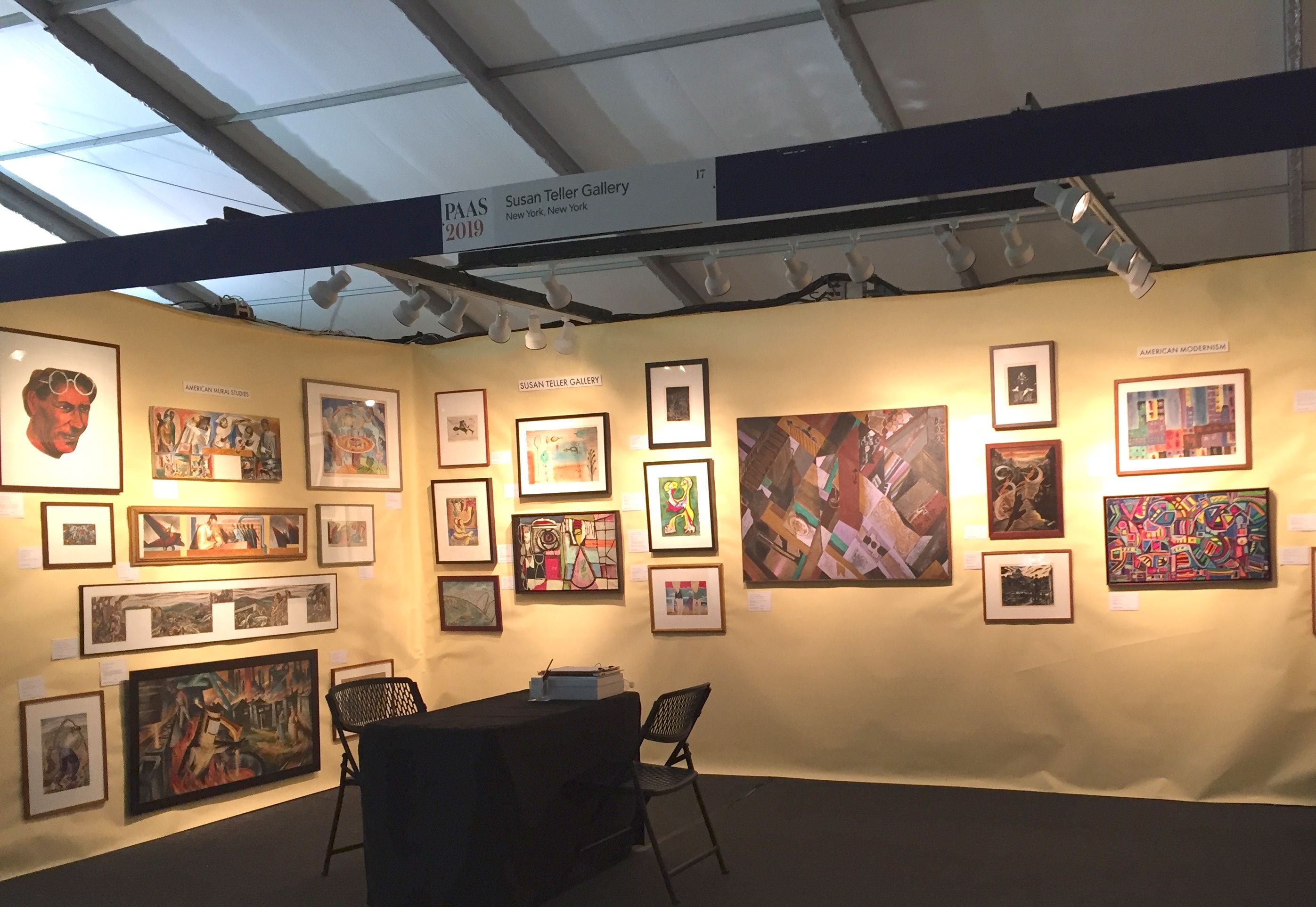
About the Seller
4.9
Gold Seller
Premium sellers maintaining a 4.3+ rating and 24-hour response times
Established in 1988
1stDibs seller since 2020
129 sales on 1stDibs
Typical response time: 5 hours
- ShippingRetrieving quote...Shipping from: New York, NY
- Return Policy
More From This Seller
View AllLuke Gwilliam (1911-1989), Mnemonic Form, 1974, woodcut
Located in New York, NY
Luke Gilliam has an unusual woodcut technique that he pairs with a complex object of his own creation. He uses technique to create a technical tour-de-force with the intriguing title...
Category
1970s American Modern Abstract Prints
Materials
Woodcut
Clinton Hill, Ocotillo (Cactus), 1962, woodcut, landscape/abstraction
By Clinton Hill
Located in New York, NY
Clinton Hill (1922-2003), lived in SoHo, New York, and was a frequent Gallery visitor. Born in Idaho and raised on a working ranch, he joined the US Navy during World War II and beca...
Category
Mid-20th Century Abstract Landscape Prints
Materials
Woodcut
$1,200 Sale Price
20% Off
Clinton Hill, (Vertical Landscape), 1960, woodcut, landscape/abstraction
By Clinton Hill
Located in New York, NY
Clinton Hill (1922-2003), lived in SoHo, New York, and was a frequent Gallery visitor. Born in Idaho and raised on a working ranch, he joined the US Navy during World War II and beca...
Category
Mid-20th Century Abstract Landscape Prints
Materials
Woodcut
Letterio Calapai, (Sky Abstraction), 1957, mid-century wood engraving
By Letterio Calapai
Located in New York, NY
Letterio Calapai is widely recognized as a major American artist of the twentieth century. He is widely respected as a printmaker, especially for engravings and wood engravings, and ...
Category
1950s American Modern Abstract Prints
Materials
Woodcut
Clinton Hill, Arroyo, 1962, woodcut, landscape/abstraction
By Clinton Hill
Located in New York, NY
Clinton Hill (1922-2003), lived in SoHo, New York, and was a frequent Gallery visitor. Born in Idaho and raised on a working ranch, he joined the US Navy during World War II and beca...
Category
Mid-20th Century Abstract Landscape Prints
Materials
Woodcut
$1,200 Sale Price
20% Off
Pamela Bianco, Fruit Piece
Located in New York, NY
Pamela Bianco achieve success as an artist in Britain while still a child. This accomplishment resulted in the family coming to the United States where ...
Category
1920s American Modern Still-life Prints
Materials
Lithograph
You May Also Like
Trevor Frankland (1931-2011) - 20th Century Linoprint, Interior with Fruit Bowl
Located in Corsham, GB
Unsigned. On Japanese paper.
Category
20th Century Still-life Prints
Materials
Screen
Still Life - Original Lithograph by Antonio Fomez - Mid 20th Century
By Antonio Fomez
Located in Roma, IT
Still Life is an original colored lithograph realized by Antonio Fomez between 1950 and 1974 .
Hand-signed in pencil on the lower right. Numbered, edition of 99 prints, (handwritten...
Category
Mid-20th Century Contemporary Still-life Prints
Materials
Lithograph
Still Life - Lithograph by Emmanuel Poirier - 1950
Located in Roma, IT
"Still Life" 1950s is a splendid lithograph, engraved by the artist Emmanuel Poirier.
The state of preservation of the artwork is excellent.
Numbered an hand-signed, on the bottom ...
Category
1950s Modern Still-life Prints
Materials
Lithograph
Still Life - Woodcut Print by Domenico Cantatore - Mid-20th Century
By Domenico Cantatore
Located in Roma, IT
Still Life is a contemporary artwork realized by Domenico Cantatore in the mid-20th Century.
Mixed colored woodcut print. Edition 52/75.
Hand signed by the artist on the lower marg...
Category
Mid-20th Century Modern Figurative Prints
Materials
Woodcut
Still Life - Original Lithograph by Emmanuel Poirier - 1950s
Located in Roma, IT
Still Life is an original lithograph on ivory paper realized in 1950s by Emanuel Poirier.
Signed on the lower left. Edition " E.A." (artist proof).
T...
Category
1950s Modern Still-life Prints
Materials
Lithograph
Composition - Original Woodcut Print By Madeleine Flaschner - Late-20th Century
Located in Roma, IT
Composition is an Original Woodcut realized by Madeleine Flaschner (1933-....).
The artwork is an experience greatly enhanced by the artist.
Mono...
Category
19th Century Modern Figurative Prints
Materials
Woodcut
More Ways To Browse
Vintage Fruit Plates
Vintage Cocktail Waitress
Vintage Hunchback Of Notre Dame
Alice In Wonderland Lobby
Banksy Cut Run
David Hockney Poster France
David Hockney Studio
Ed Bearden
Elizabeth Catlett Glory
Miro Spanish Dancer
Movie Title Card
Still Life With Lobster Lichtenstein
Vintage Jazz Dress
Banksy Happy Choppers
Jane Goldman
Joni Frankel
Peter Max Green Dress
Roy Lichtenstein Oval Office
